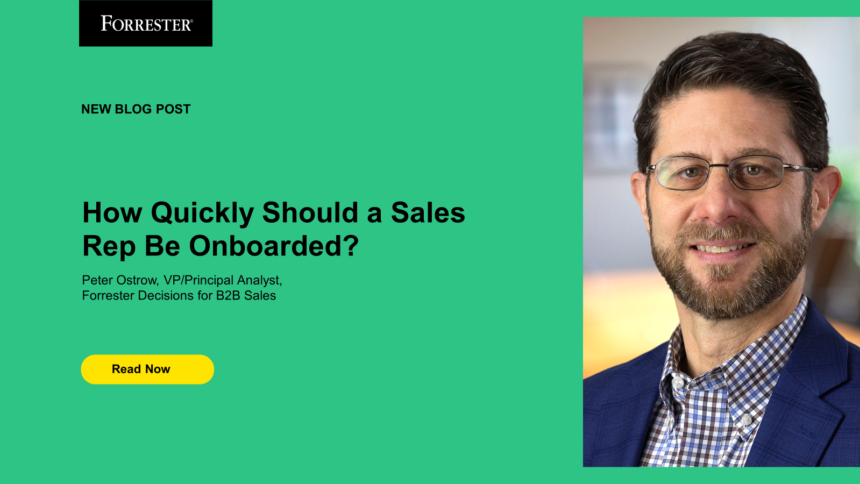In many professions, education for a new employee’s role incorporates learning with doing. Educators must undergo a full semester of student teaching; surgeons develop by “watching, teaching, doing”; and aspiring electricians must deliver hundreds of hours as apprentices prior to licensure. Even most MLB stars spend years toiling in the minor leagues perfecting their skills. But this sort of learning by doing rarely applies in B2B sales, where few formal vocational learning opportunities exist. The moment when most reps start drawing salary, everyone around them expects almost immediate ROI.
This dynamic is an almost universal anxiety source for revenue enablement leaders charged with delivering both impactful and rapid sales onboarding. Having often been sellers or sales managers themselves, they acknowledge the need to fill under- or uncovered territories that sit waiting for new talent. And because there are few formal sales courses or degrees available, new-hire training is often considered lightweight and opaque. These factors frequently add up to sales onboarding that is rushed, inefficient, and eventually damaging to reps, companies, and customers alike.
Forrester research, however, consistently proves that focusing on good, not fast, is best for most sales onboarding. While sending newly hired reps into the field rapidly is tempting — in fact, 7% of companies put them in front of buyers on day one — the long-term deficiencies engendered by insufficient ramping quality are far more painful than the advantages of a week or two’s time saved on the front end of a seller’s multiyear career.
So how quickly should a sales rep be onboarded? There are two components of the answer: how long until they engage with customers versus when they are formally graduated into the field. Our research indicates that a roughly 3.5x relationship between these two values, and approximately one-third longer cadences for winning sales reps and teams, are ideal:

This may seem counterintuitive to traditionalists who think about a sales onboarding cadence as these sequential steps: 1) full-time internal boot camp; 2) certification; and 3) full-time selling. Like any other adult learner, however, B2B sellers effectively acquire new competencies less by watching, listening, or reading — rather, they learn by doing.
Our most successful customers avoid this catch-and-release cadence. They recognize that effective seller ramping blends learning delivery with practical field execution. It recognizes the value of learning by doing and looks like this:

It’s impossible to teach new sales hires every core competency during this limited, frenzied, and overwhelming moment of their professional lives. Instead, consider these best practices:
- As the data and visual above indicate, start feathering in selling activities early so that practical application of skills being taught can be applied, observed, scored, and remedied before full-time selling begins. Simultaneously feather out learning time so that eager-beaver sellers and managers can start attacking quota attainment goals but are still under the auspices of the enablement team’s developmental guidance.
- Our Continuous Learning Framework applies adult learning science to sales roles. For any new competency: Tell me what I need to know; show me what good looks like; let me do it repeatedly, in a safe practice environment, until I’ve mastered it; reinforce learnings over time with observation and teach-back; and strive for me to personally own it so that I become a subject-matter expert and force multiplier for others on the team.
- Deploy field sales coaches and objective sales coaching rubrics to ensure that reps don’t merely squeak through pass/fail roleplay scenarios, having done the assigned work, but can actually genuinely execute competencies where and when it matters: in front of buyers.
- Don’t under- or overteach new sellers by lumping everyone into a single onboarding journey. Some new hires should, like high-school seniors earning AP credit for college, move more quickly than planned. Others might take longer than expected or even not be able to graduate into field duty.
- Use the right delivery vehicles for sales learning based on what your best, and age-appropriate, sellers prefer. Our research consistently aligns excellence with interpersonal training delivery modalities such as on-the-job informal learning, peer collaboration, and one-to-one manager-led coaching. At the bottom of the list: podcasts, gamification, and real-time webinar lectures.
So the answer really is: Onboard reps thoughtfully, with the right goals in mind, and try to be patient. It’s worth it.







